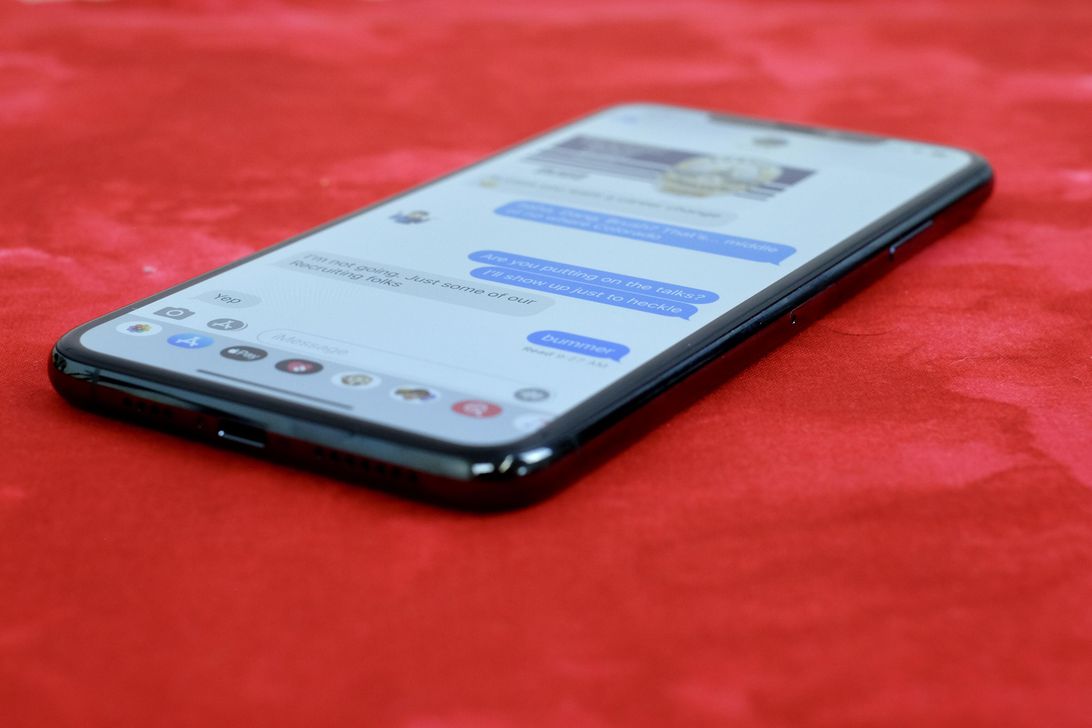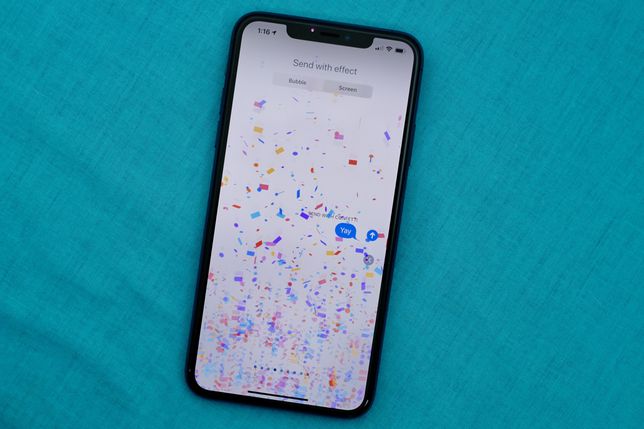
Apple’s iMessage needs to start looking beyond the iPhone.
Jason Cipriani/CNET
Apple’s iMessage has a long history of separating people into “blue” and “green” bubbles based on whether they’re using an iPhone or Android phone. But that problem is now far bigger than looking cool in our group chats.
Last week, the Wall Street Journal published a story detailing how this distinction between green and blue chat bubbles has caused social pressure among teens and young people. The blue and green bubble debate highlights a broader problem throughout the industry: There is no single, modern texting standard that works across all phones. Rich Communication Services, or RCS, is the closest alternative.
Google has been championing this messaging platform, which is packed with iMessage-like features such as typing indicators and read receipts, by working with carriers to make it the default option on most Android phones. It’s a step forward in making messaging more uniform across the wide variety of Android devices that exist. But it still doesn’t fix the issue highlighted by the Journal of improving compatibility between the iPhone and Android phones.
As one of the biggest players in the mobile phone industry, Apple could undoubtedly be doing more to help establish a more consistent texting experience across devices. But the question is whether doing so is in the company’s interest. Apple often touts its control over iOS as a selling point for consumers, and shifting away from iMessage could jeopardize that.
Apple has not yet responded to CNET’s request for comment, and Google pointed us to a number of tweets from Hiroshi Lockheimer, its senior vice president for Android, in which he criticizes Apple for using “pressure and bullying” to lock in users.
Apple’s iMessage lock-in is a documented strategy. Using peer pressure and bullying as a way to sell products is disingenuous for a company that has humanity and equity as a core part of its marketing. The standards exist today to fix this. https://t.co/MiQqMUOrgn
— Hiroshi Lockheimer (@lockheimer) January 8, 2022
We’re not asking Apple to make iMessage available on Android. We’re asking Apple to support the industry standard for modern messaging (RCS) in iMessage, just as they support the older SMS / MMS standards.
— Hiroshi Lockheimer (@lockheimer) January 10, 2022
However, there are a few changes Apple could make to address this issue, similar to the way it brought a limited FaceTime experience to Android and Windows users in iOS 15.
Supporting RCS in Apple’s Messages app, even a little bit
Starting with the most obvious, it may be time for Apple to consider RCS support in iOS 16. In addition to RCS including many iMessage-like features like typing indicators, enhanced group chats and encryption, Apple does have a history of adopting open formats after they have spent a few years developing.
For instance, Apple did not race into the wireless charging space and instead waited for the Qi standard to reach widespread adoption before integrating it into the iPhone 8 and iPhone X in 2017. It even intended to build its own Qi-based AirPower wireless charger, but instead held back until 2020 to sell its own MagSafe wireless chargers.
Apple doesn’t even have to give RCS a full endorsement to make a difference. It could keep non-iPhone messages green and lean on iPhone-exclusive features like Memoji, which uses the iPhone’s Face ID to create facial animations, to keep Apple loyalists hooked. But supporting a few key features would go a long way in allowing for a smoother communication experience while keeping a degree of that Apple exclusivity.
It could also allow for encryption between messages regardless of platform, especially since Apple has been a public defender of user privacy. One would reason that this alone should have the company embracing RCS.
iPhone 13, iPhone 13 Mini camera testing: See how Apple’s new phones take photos
See all photos
Improve how Apple’s Messages app sends and receives SMS

Apple’s iMessage includes lots of fun animations that are invisible to anyone who isn’t using an iPhone in your group chat.
Jason Cipriani/CNET
If supporting RCS is simply not going to happen in iOS, Apple could instead make sure its Messages app is making the most of the limited bandwidth available within SMS and MMS.
Perhaps when photos and videos are sent over MMS, which was never designed for the double- and triple-lens cameras on phones we have today, Apple’s Messages app could proactively suggest sending an iCloud link instead of a grungy compressed picture that now looks unrecognizable. This could work similarly to a feature that’s currently in Google Photos, where you can select a number of photos and generate a web link to share with your friends or family members.
And perhaps, similar to how Apple recently brought a version of FaceTime to the web for Android and Windows users, maybe it could create a version of iMessage that is viewable on the web. This could benefit its existing iPhone customers who would like to access iMessage from a Windows PC or Chromebook, while also allowing Android phone owners to view messages and other shared content the same way an iPhone user would. This idea would still be annoying for Android users, but it’s better than receiving texts out of order during fast-flowing group chats.
Build iMessage for Android
One of the most surprising revelations from last year’s Apple vs. Epic trial was that Apple had discussed building an iMessage client for Android back in 2013. But Apple executives passed on the idea over concerns about the competition. The possibility of Google buying WhatsApp worried Apple, and the company also feared that bringing iMessage to Android could make it easier for iPhone owners to switch to Google’s phone platform, as the WSJ story pointed out.
But much has changed in the years since, including Facebook’s purchase of WhatsApp instead of Google. Although Apple has opened up some of its products like FaceTime, it also relies on its services to lock in iPhone customers.
On the other hand, bringing iMessage to Android could instead draw more customers to Apple’s iPhone ecosystem. It’s a strategy that worked way back in the 2000s, when launching iTunes on Windows considerably increased the customer base for Apple’s music store. Sure, it might convince some iPhone customers to jump ship and switch to Android. But it could also help Apple reach a wider audience by exposing Android users to its products and services.
What do you think of iMessage’s green bubbles? Would you want RCS to come to the iPhone? Or would you rather everyone you know just use iMessage? Talk about it in the comments.